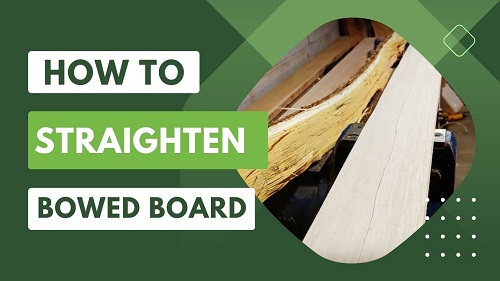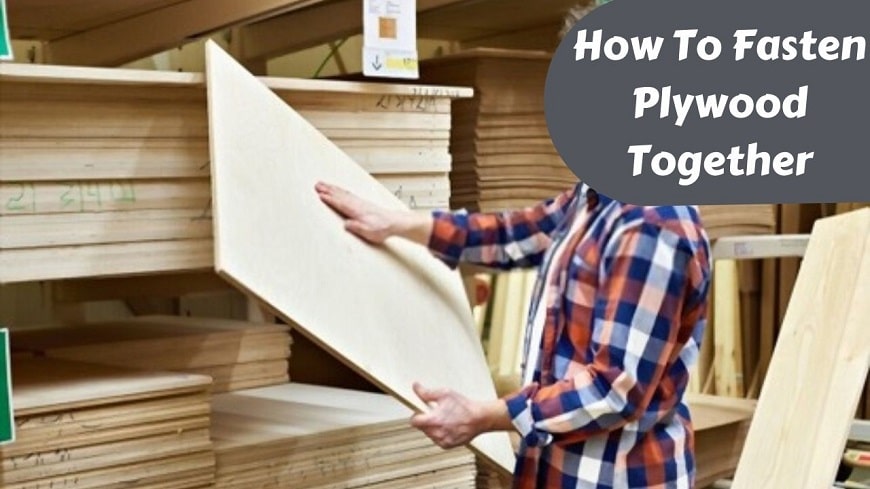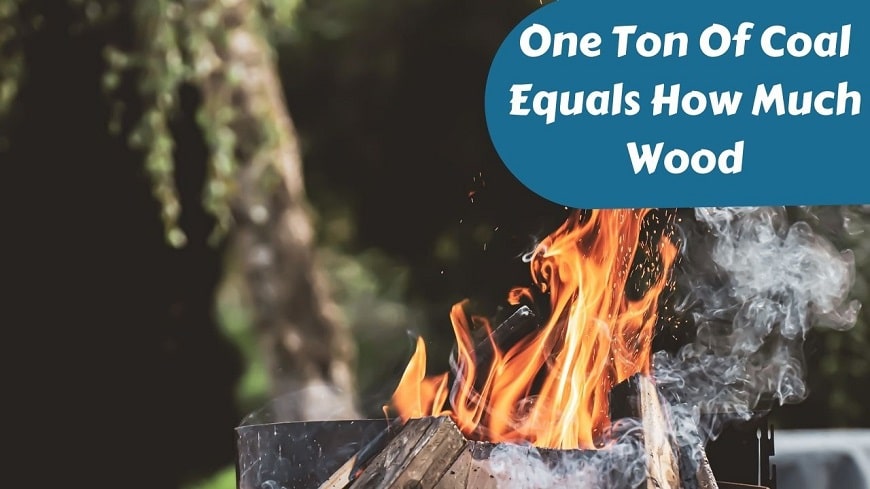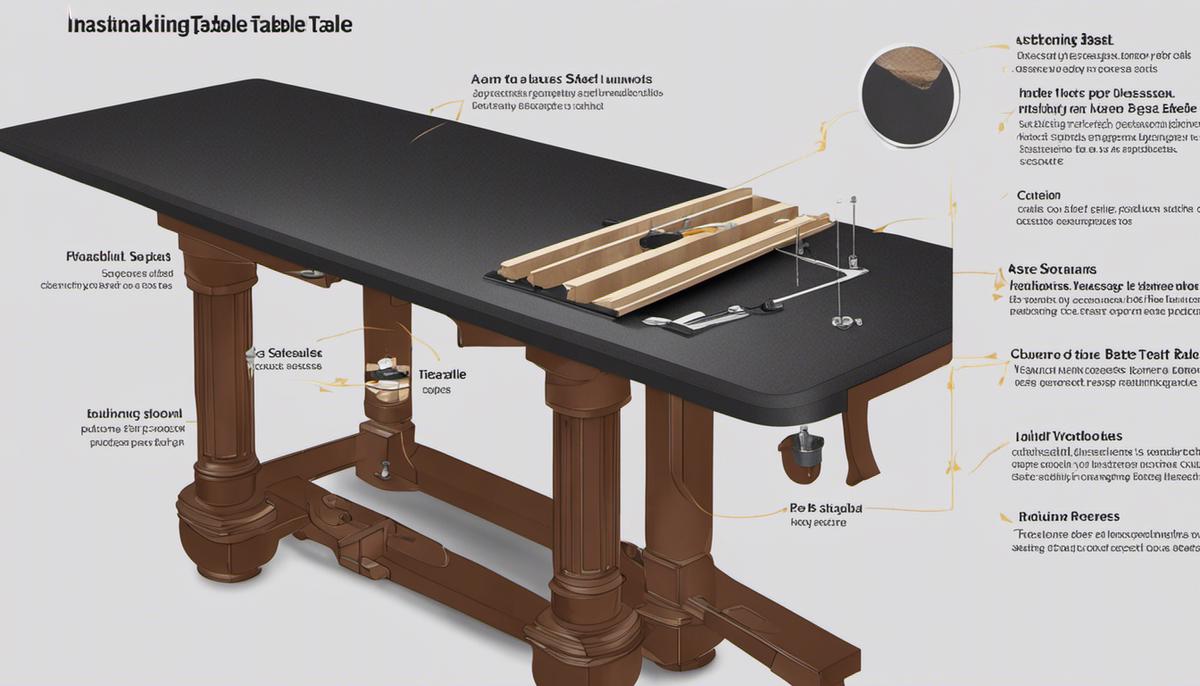Using a table over time can cause warping to the tabletop. It may divert all your attention to its warped condition. Additionally, a wobbly tabletop can be quite annoying.
So, your concern now is, how to flatten warped wood table top?
Firstly, you can flatten the warp through ironing. This includes placing wet towels over the warped zone. Then ironing through the wooden table. Another method is using the batten process. Here, the process might seem a bit complicated but not impossible.
However, it’s difficult to understand the procedure with this amount of information. Therefore, please make sure to stay with us for the main part!
Sounds good? Let’s just get into it then!
| Method | Difficulty | Cost | Time Required | Skill Level Required | Equipment Needed | Success Rate |
|---|---|---|---|---|---|---|
| Moisture Technique | Easy | Low | Several days | Beginner | Plastic Sheets, Weights, Water, Fans | Moderate |
| Weighted Top Technique | Moderate | Medium | Several days | Intermediate | Plywood, Clamps, Weights | High |
| Hand Planing | Difficult | Low | Few hours | Advanced | Hand Plane, Workbench, Clamps | High |
| Router Technique | Difficult | High | Few hours | Advanced | Router, Router Bit, Clamps | High |
| Heat and Pressure Technique | Difficult | High | Few hours | Advanced | Heat Gun, Clamps, Weights | High |
One of our articles –How to Sand a Table Top?
Table of Contents
Why Does Wooden Table Top Get Warped?
The wooden tabletop can become warped for various reasons, with two of the most notable factors being humidity and the natural stability of wood.
Usually, the higher the moisture content in your wood, the more likely it is to warp. Some types of wood are more prone to warping due to their moisture content.
Typically, woodworkers pay extra attention to the top of the table, staining and varnishing the upper side while leaving the underside bare.
Consequently, this differential treatment can lead to uneven finishing, causing expansion and contrasting effects on the underside. As a result, your wooden table may begin to warp.
One of our articles –Decorating Your Glass Table Top.
How To Fix The Warped Wooden Table?
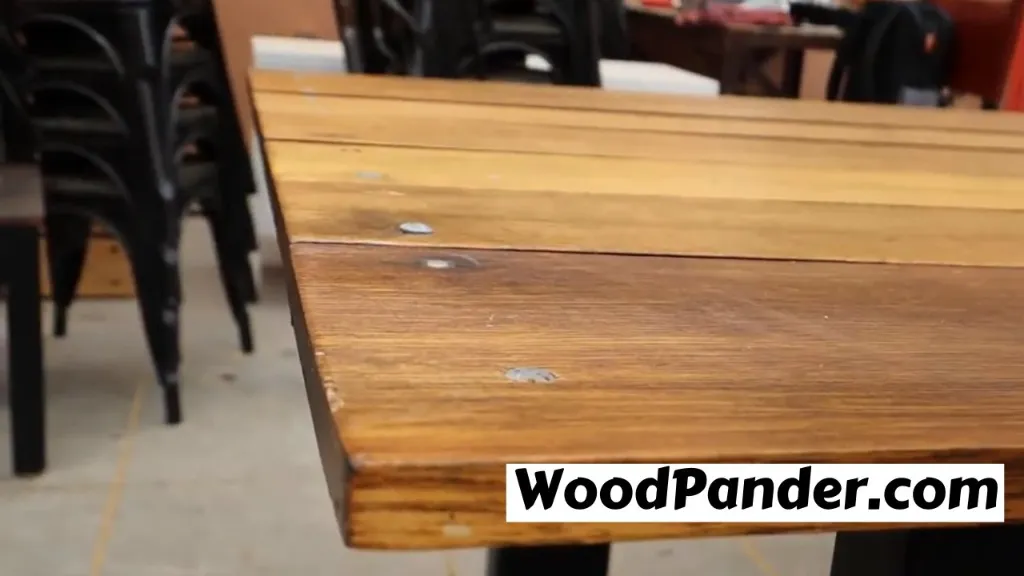
Your main concern is to repair your warped tabletop. Well, we have shown the 2-method solution to restore the warped table top. We’ve tried to guide you as simply as possible.
So, let’s go to the main part, which is discussed below-
Method 1: Ironing The Warped Area
We can fix our warped table through this ironing process. This is one of the easiest processes of all. If you iron the warped wood in a correct way, you can solve this problem if you follow our instructions thoroughly.
Step 1 of 3: Placing Wet Towels
Firstly, collect some large, moistened towels that are heat-tolerant. Now, cover every warped surface with wet towels.
You have to ensure that those towels don’t drip water, so drench them properly. Then place them over the warped area.
Step 2 of 3: Set The Table on A Plain Surface
Now, place your tabletop on a plain surface. An ironing board can also do the work.
To do so, firstly, detach your warped tabletop. Then place it on the ironing board because it’ll help the wooden tabletop to iron the concave part. Ensure that the warped part is facing upward.
Step 3 of 3: Iron The Wooden Tabletop
Remember to use an iron that produces moist heat. A dry one won’t work as our process requires moisture while ironing the warped surface.
Now, turn the steam on and set the iron to the highest heat setting. Next, wait for 4-5 minutes so the iron generates its maximum heat.
Once your iron is properly heated, begin the ironing session. You can start from the warped area. Ensure to apply enough force while pressing, especially on the damaged surface.
Hold the iron on that spot for at least 10 seconds, then slowly glide it over the entire surface.
Continue this method until the surface appears to flatten. If you notice that the process isn’t working, and the table is in severe condition, you may need to call a professional or replace the tabletop
Method 2: Fix the Warped Tabletop Through Battens
You can also apply this method to restore your tabletop, even though you might need some technical knowledge of carpentry to accomplish the process. So, let’s solve this problem:
Step 1 of 4: Prepare Your Tabletop & Battens
First, remove your table legs with the help of a screwdriver, or you can break the glue bond with a hammer and wood chisel. Then use a chemical wood stripper to clean the table and wash away any excess stripper residue.
Next, take measurements of the length and width of your tabletop. Then, cut 2-by-2-inch strips of lumber, making them 2 inches longer than the width of the table. Cut at least 8-10 of these strips, also known as battens.
Furthermore, place these battens along the long sides of the table, spacing them every 12 inches, both on top and bottom.
Step 2 of 4: Place the Tabletop & Battens Over the Sawhorses
Now, take two sawhorses and set them up outside where there is ample sunlight. Position the battens on the sawhorses, spacing them every 12 inches. Then, place your tabletop across the sawhorses and battens, with the warped side facing upward.
Collect damp, large towels and lay them over the warped area. Lay the battens across the wet towels and tabletop, aligning them under the tabletop.
Step 3 of 4: Use Hand-Screw Clamps to Tighten the Battens
In this step, use hand-screw clamps to secure the battens together. Place them from the bottom batten to the top batten.
Extend the clamps toward the center of the table and tighten the screws as firmly as possible. Finally, place another wet towel on top of the table.
Step 4 of 4: Expose the Setup to Sunlight
Finally, leave the entire setup in the sunlight. Don’t forget to tighten the clamps and moisten the towels daily.
Follow the heating process for up to one week, depending on the severity of the warped wood. When the warp is gone, remove all the fixtures. Lastly, reassemble your tabletop and legs.
And that’s all!
One of our articles –Portable Domino Table Top.
Method 3: Using Weight and Heat
Flattening a warped wood table top using weight and heat is an effective technique that can gradually restore the surface to its original flat state. Follow the step-by-step instructions below to successfully flatten your table top:
Step 1: Prepare the Work Area
- Clear a flat and spacious area where you can work comfortably with the table top.
- Ensure good ventilation to dissipate any heat generated during the process.
Step 2: Identify the Concave Side
- Examine the table top to determine the concave side, which is the side that curves inward.
- This is the side that needs to be flattened.
Step 3: Place the Table Top
- Carefully position the table top on the work surface with the concave side facing down.
- Make sure it is stable and won’t shift during the process.
Step 4: Gather Weighting Materials
- Prepare heavy objects such as books, weights, or other flat items that can apply even pressure.
- The weight should be evenly distributed across the warped area.
Step 5: Apply Heat
- Use a heat gun or an iron with a fabric cloth to apply heat to the concave side of the table top.
- Set the heat gun or iron to a low or medium setting to avoid scorching the wood.
- Keep the heat source moving to prevent overheating in one spot.
Step 6: Start Placing Weights
- Begin by placing weights on the center of the warped area.
- Gradually distribute the weights outward, moving towards the edges of the table top.
- Ensure the weights are positioned evenly to apply uniform pressure.
Step 7: Monitor and Adjust
- Regularly check the progress of the flattening process.
- Make any necessary adjustments by adding or repositioning weights if needed.
Step 8: Allow Time for Flattening
- Depending on the severity of the warp, it may take several days or even weeks for the table top to flatten.
- Be patient and resist the urge to rush the process.
Step 9: Check for Progress
- Periodically lift the weights and check the flatness of the table top.
- If there is noticeable improvement, continue with the process until the desired flatness is achieved.
Step 10: Remove Weights and Finish
- Once the table top has flattened, carefully remove the weights from the surface.
- Inspect the table top to ensure it is flat and stable.
- Proceed with any necessary refinishing, such as sanding or applying a protective finish.
Remember, using weight and heat to flatten a warped wood table top requires patience and careful monitoring.
It’s essential to avoid applying excessive heat or weight, as this can cause further damage to the wood. If you’re unsure or uncomfortable with the process, it’s recommended to consult a professional for assistance.
Method 4: Resurfacing the Table Top
Resurfacing the table top is a method used for more severe cases of warping. It involves removing a thin layer of wood to eliminate the unevenness and restore a flat surface.
Follow the step-by-step instructions below to resurface your warped wood table top:
Step 1: Gather Materials and Tools
- Prepare the necessary materials and tools, including:
- Coarse-grit sandpaper (such as 60 or 80 grit)
- Fine-grit sandpaper (such as 120, 180, and 220 grit)
- Sanding block or electric sander
- Safety goggles and a dust mask
- Clean, lint-free cloths
- Wood filler (if needed)
- Protective finish (such as varnish or lacquer)
Step 2: Secure the Table Top
- Place the table top on a stable work surface or secure it firmly to prevent movement during the resurfacing process.
Step 3: Sand the Surface
- Start by sanding the entire surface of the table top using coarse-grit sandpaper.
- Use a sanding block or an electric sander for larger surfaces.
- Sand in the direction of the wood grain to avoid causing scratches.
- Apply even pressure and keep the sanding motion consistent.
Step 4: Check for Flatness
- After sanding, check the flatness of the table top.
- Look for any remaining uneven areas or high spots.
- If there are noticeable dips or low spots, mark them for additional sanding.
Step 5: Address Low Spots
- If you identify low spots on the table top, fill them with wood filler.
- Follow the instructions on the filler product for proper application.
- Allow the filler to dry completely before proceeding.
Step 6: Sand with Fine-Grit Sandpaper
- Switch to finer-grit sandpaper (such as 120, 180, or 220 grit) to achieve a smoother surface.
- Sand the entire table top using the finer-grit sandpaper.
- Continue sanding until the surface feels smooth and even.
Step 7: Remove Dust
- Wipe away any dust or debris from the table top using a clean, lint-free cloth.
- Ensure the surface is clean before proceeding to the next step.
Step 8: Apply Protective Finish
- Choose a suitable protective finish, such as varnish or lacquer, to enhance the appearance and durability of the table top.
- Follow the instructions on the finish product for proper application.
- Apply the finish evenly, using long, smooth strokes in the direction of the wood grain.
- Allow the finish to dry according to the manufacturer’s instructions.
Step 9: Inspect and Repeat if Necessary
- Inspect the resurfaced table top for any remaining warping or imperfections.
- If needed, repeat the sanding and refinishing process until you achieve a flat and smooth surface.
Step 10: Clean Up
- Clean up the work area and properly dispose of any sanding debris.
- Store or discard the used sandpaper and other materials according to local regulations.
By following these step-by-step instructions, you can successfully resurface a warped wood table top. Remember to exercise caution, use proper safety equipment, and take your time to achieve the desired results.
One of our articles –: Does Hot Glue Work On Wood?
Preventing Warping in the Future
Preventing warping in your wood table top is essential to maintain its integrity and prolong its lifespan. Here are some tips to help you prevent future warping:
Maintain consistent humidity levels:
Fluctuations in humidity are one of the main causes of wood warping. Aim to keep the humidity levels in the room where the table is located relatively stable.
Use a humidifier in dry environments or a dehumidifier in humid environments to maintain a consistent humidity range between 40% and 55%.
Avoid direct sunlight and extreme temperature changes:
Excessive exposure to sunlight can cause wood to dry out and warp. Keep your table away from direct sunlight or use window treatments to block harmful UV rays. Additionally, avoid placing your table near sources of heat, such as radiators or fireplaces, as extreme temperature changes can lead to warping.
Use protective pads or coasters:
When placing hot or cold items on the table, use protective pads or coasters to create a barrier between the table top and the object. This helps to prevent rapid temperature changes and moisture buildup, reducing the risk of warping.
Clean and condition regularly:
Regular cleaning and conditioning of the wood can help keep it moisturized and protected. Use a mild wood cleaner and follow up with a suitable wood conditioner to replenish the natural oils and prevent the wood from drying out.
Avoid excessive moisture exposure:
Avoid spilling liquids on the table top and promptly clean up any spills to prevent moisture from seeping into the wood. Wipe the table top with a dry or slightly damp cloth as needed and ensure it is thoroughly dried afterwards.
Do not place heavy objects on unsupported areas:
Uneven weight distribution can cause stress on the table top and lead to warping. Avoid placing heavy objects on unsupported areas of the table, especially if it’s a large or thin piece of wood. Consider using additional support, such as table leg braces or a sturdy base, if needed.
Regularly inspect and maintain:
Keep an eye out for any signs of warping or damage and address them promptly. Periodically check the stability of the table top and make any necessary adjustments or repairs to prevent further warping.
By implementing these preventive measures, you can significantly reduce the risk of warping in your wood table top and enjoy its beauty and functionality for years to come. Remember, proactive care and attention to environmental factors are key to maintaining the stability and longevity of your wooden furniture.
Related Questions
Can warped wood be straightened?
Yes, you can straight up warped wood. For that, soak the wooden piece in water. But if you’re unable to submerge then there’s another way. Place a wet cloth on the warped curve. Let the wood soak water until it’s straightened again.
Can a warped wood table top be salvaged?
Yes, in most cases a warped wood table top can be salvaged by flattening it using a few different methods.
Does superglue work on wood?
Yes, you can use superglue on wood. Actually, superglue is used for resistance to temperature and moisture. Rather than wood, this glue is also used with stone, metal, glass ceramic, etc.
What causes a wood table top to warp?
Wood table tops can warp due to changes in temperature and humidity, uneven exposure to moisture, and poor storage conditions.
How do you stop wood from warping?
There are many ways to prevent your wood from warping. You can place wood piles over flat foundations. Or, set wood boards and stickers in similar piles of equal thickness. Or rather align stickers vertically and lay them flat.
How long does it take to flatten a warped wood table top?
The length of time it takes to flatten a warped table top will depend on the severity of the warping and the method used. It may take a few hours to a few days to complete the process.
How do I know if my wood table top is warped?
A warped table top may have visible bumps, unevenness, or warping along the surface. It may also wobble or rock when placed on a flat surface.
What tools do I need to flatten a warped wood table top?
You will typically need a power sander, sandpaper, clamps, and a level to flatten a warped wood table top.
What can I do to prevent my wood table top from warping in the future?
To prevent your wood table top from warping in the future, store it in a cool, dry place and avoid exposing it to extreme temperatures and humidity. Consider using a sealant or protective coating to prevent moisture from seeping into the wood.
How to Screw Down a Warped Board?
To screw down a warped board, first, identify the high points of the warp. Then, use screws to secure the board in those areas to flatten it out.
Final Words
So, are you stress-free now that you know how to flatten warped wood table top?
We hope you can fix it on your own now. Good luck!

